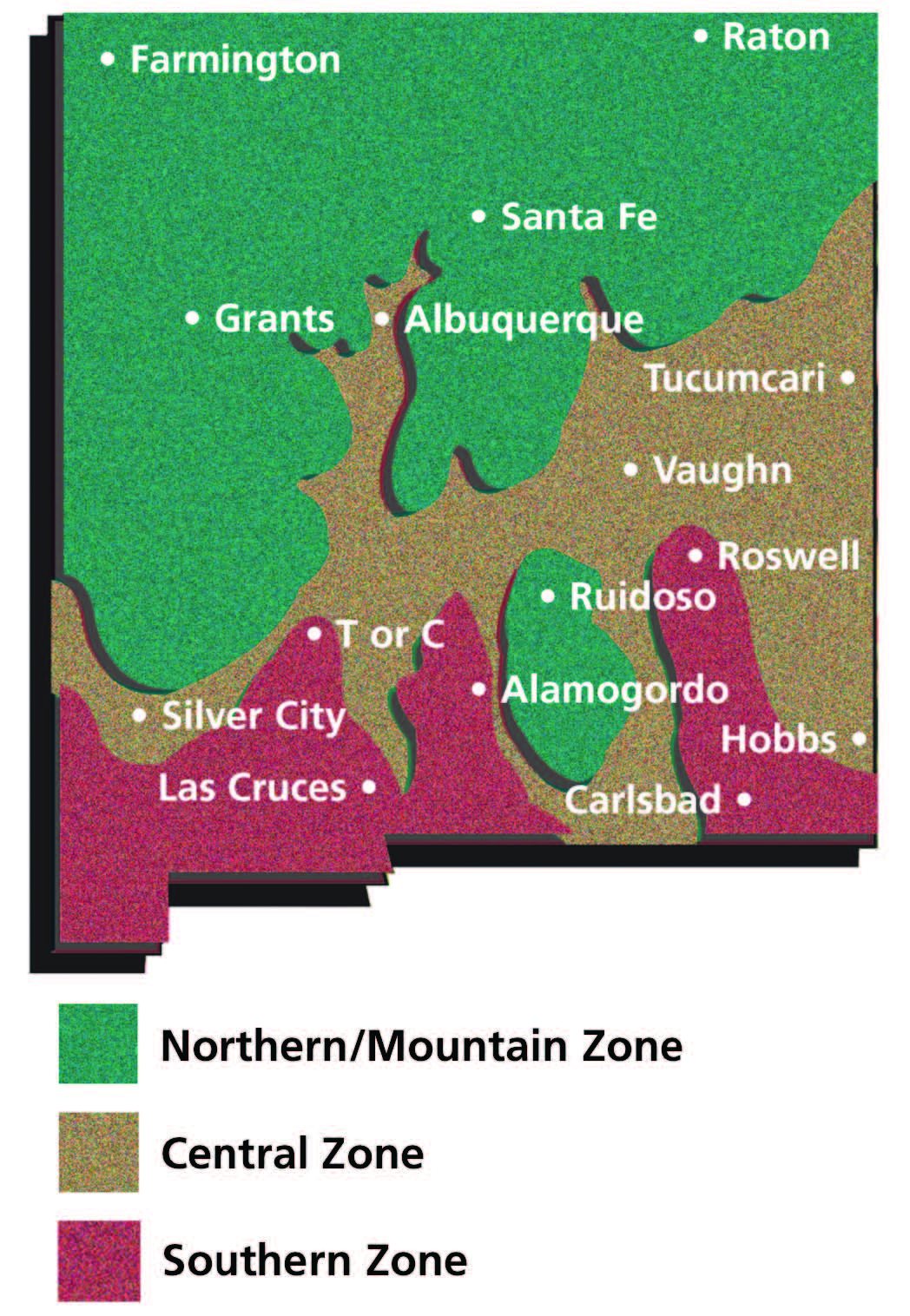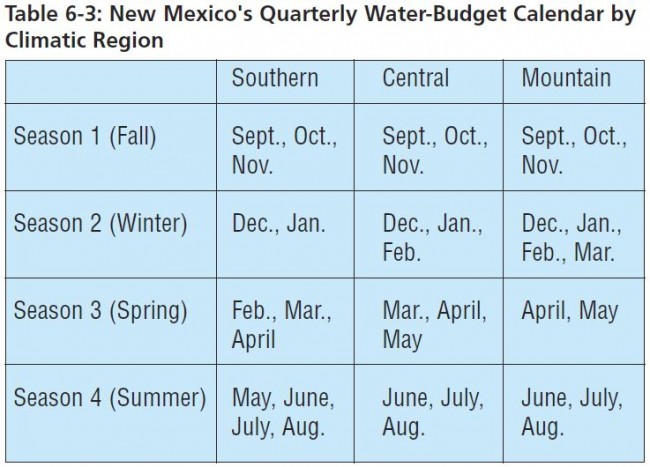The PermaDesign Weblog, with Nate Downey and Melissa McDonald!
Roof-Reliant Landscaping™ Step 14D: The Roof-Reliant Calendar
The Roof-Reliant Calendar A quarterly water budget, divided into “seasons” that coincide with the climatic and precipitation patterns in the state, is recommended for roofreliant landscapers. The water-budget fiscal year begins on September 1 and ends on August 31.
Breaking down the year in this way also relates more precisely with the extremely variable water needs that plants have during the course of the year. Specifically, most plants typically need decreasing amounts of water in fall, little to no water in winter, increasing amounts of water in spring and the most water in summer.
Dividing the year in this manner reminds us that the beginning of summer is the most important time of the year to have water stored in your cistern (because water use will be highest in this season). This seasonal calendar can also serve to remind us that fall is an excellent time to plant the less heatand drought-adapted plants such as fruit trees and shade trees in the high-water zones (zone 3) of the landscape. Fall is also the time to begin weaning established xeric plants off of supplemental water as days become shorter and temperatures become cooler. This allows plants to start going dormant in preparation of upcoming winter weather.
For the roof-reliant landscaper, the fiscal year should start with a full cistern system. Fall comes soon after the end of a typical “monsoon” season, so the assumption that water-storage tanks will be full at the beginning of the process of water budgeting is certainly plausible—especially if your cistern installation occurred the previous winter or fall. The first season begins after the time of greatest landscape-water need and at the beginning of the time to start saving water for the next hot season.
Each season can vary considerably depending on where you live. Table 6-3 presents a guideline to the seasons for the three climatic regions of the state. Please contact your county extension agent for localized information.

Below is a quick summary of the watering goals and strategies for each quarter of the water-budget calendar year. Remember that precipitation not only fills up your cistern but also waters your plants, so adapt your watering schedule accordingly.
• Season 1/Fall. Water sparingly, especially as the season progresses. The exception is for new plantings, which will need extra supplemental water to get established. (Your cistern should be relatively full after the summer monsoon season.)
• Season 2/Winter. Most plants are dormant, so refrain from watering. Trees, especially evergreens, may need monthly watering during dry months with little or no precipitation.
• Season 3/Spring. A time for frugal watering that keeps plants alive but reserves as much water as possible. Watering should increase as temperatures rise with the approach of summer.
• Season 4/Summer. Plants need the most water during the hottest months of the year. Being prepared for the beginning of the hot weather with water stored in the cistern is critical. The monsoons should begin to refill your cistern and start the cycle again.
Due to its higher temperatures, Season 4 of thewater budget fiscal year is often the most challenging. But given a “normal” monsoon season in New Mexico, a realistic planting plan and conscientious water saving during the three previous seasons, your landscape should have no difficulty surviving the heat of summer. In fact, the summer months are when cisterns can fill up rapidly, sometimes to capacity.
Before detailing a water budget, it is important to address weather variations. New Mexico weather varies not only by location and elevation but also from year to year. Floods, drought, late and early freezes, high temperatures and wide temperature variations are all part of our weather cycle. Prepare your landscape to survive these extreme conditions by planting appropriate droughttolerant species, encouraging deep roots and storing water for the days without rain.
01/08/2016 | (0) Comments











Comments